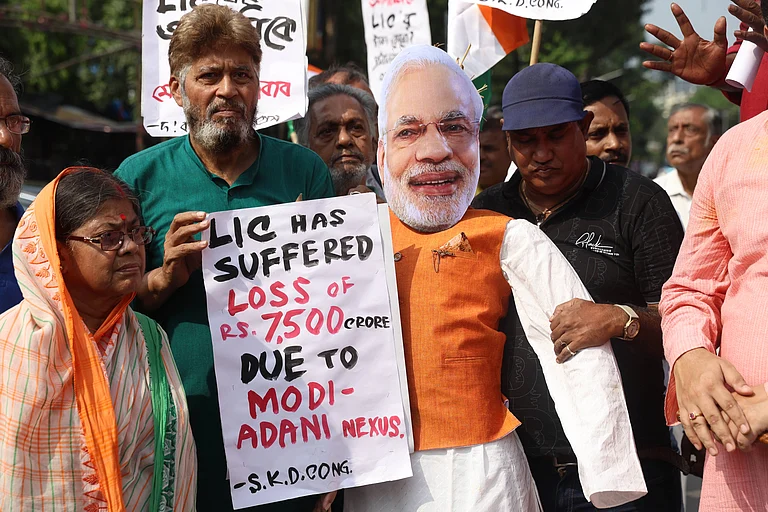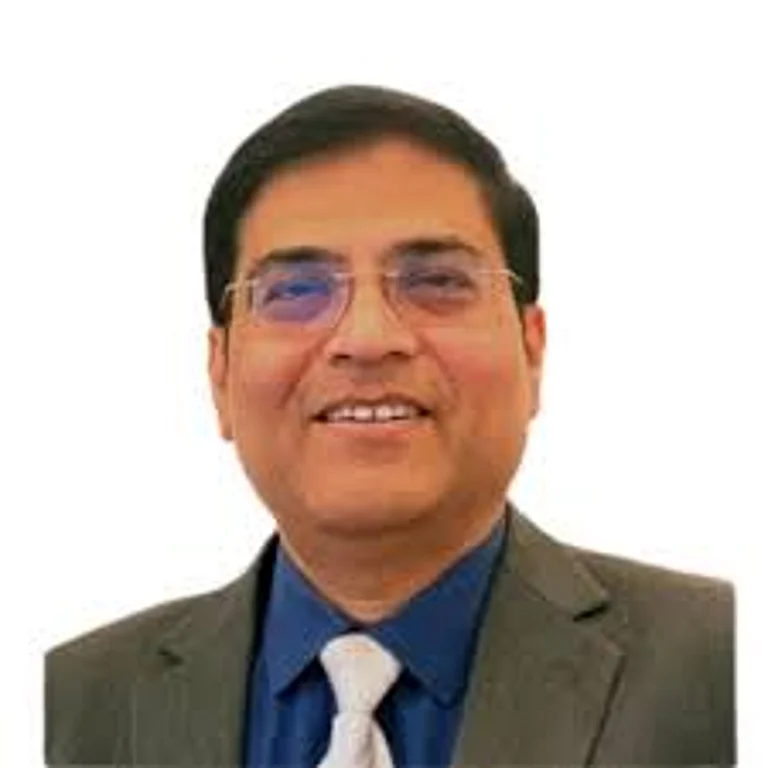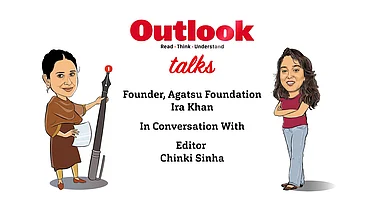Trigger Warning: This story contains mentions of suicide. Reader discretion is advised. If you or someone you know is struggling, please contact these numbers.
Helpline: iCall (9152987821) or AASRA (+91-22-27546669) — Available 24/7.

Suicides in India are a public health emergency.
There has been a marked increase of 4.2 per cent in the number of suicides from 2021-2022, especially among the youth and elderly.
The government launched a National Suicide Prevention Strategy (NSPS) in 2022 aimed at reducing the suicide mortality in the country by 10 per cent by 2030.
Suicides in India have quietly become a public health emergency, especially in the last few years. In 2022, India’s suicide rate rose to 12.4 per 100,000 population, up from 12.0 in 2021, marking a 4.2 per cent increase in the number of suicides—from 164,033 to 170,924.
This is the highest suicide rate since records began more than 60 years ago. During the COVID-19 pandemic (2020), suicide deaths rose by 10 per cent—from 139,123 in 2019 to 153,052 in 2020. Compared to 2019, there was a 22 per cent increase in the number of deaths by suicide in four years until 2022—data for 2023 onwards has not yet been released by the National Crime Records Bureau (NCRB). In response, the government finally launched the long overdue National Suicide Prevention Strategy (NSPS) in 2022 that aims to reduce the suicide mortality in the country by 10 per cent by 2030. However, without a significant effort by all stakeholders across sectors, including health, as well as allocation of substantial resources by the government, this goal is impossible to achieve.
Suicides by children under 18 years of age are of particular concern. There has been a worrying increase in children’s suicides in recent years. For the past three years consistently, there have been more than 10,000 child suicides each year. It has also been observed that below the age of 18, girls are more likely to die by suicide than boys. While suicide can occur at any point in an individual’s lifetime, each phase brings with it distinct challenges. For instance, adolescents and young children may struggle with academic challenges or neglectful or abusive parenting, while many older adults grapple with social isolation and coming to terms with physical limitations.
India, being a ‘young’ country, the suicide rate is the highest among the population below the age of 30, who accounted for 41 per cent of the total suicides in 2022. However, there is also a worrying scenario at the other end of the age spectrum. In a span of four years, suicides among elderly people—those aged 60 and above—have climbed from 11,013 deaths in 2019 to 15,339 deaths in 2022, a deeply concerning 40 per cent increase, almost double the increase in overall suicides. Given the rising challenge of suicide among these populations, this article endeavours to unpack the key risk factors for suicide in these populations, the policy landscape, and the way forward.
According to the NCRB, the leading cause of suicides (31.3 per cent) in the population below the age of 30 was “family problems”. However, the data fails to capture the full picture of causes that influence suicide in this population. Literature shows that interpersonal challenges, such as adapting to societal, familial, and peer expectations or being subjected to bullying or harassment and stigma and discrimination; economic factors such as unemployment and poverty; academic failure; and structural discrimination based on caste, gender, and sexual identity, and others, can interact with each other to push a person to suicide.
Illness is the leading cause of suicides among older population, particularly prolonged illnesses, followed by mental illnesses.
The phenomenon of student suicides, in particular, has gained much interest in the recent past. In 2022, 7.6 per cent of people who died by suicide were students, and 2095 deaths were directly attributable to ‘failure in examinations’. Recognising this crisis and bemoaning the lack of regulatory and legislative action, the Supreme Court, in a recent judgement, criticised the prevailing education system, which prioritises competition and performance over an individual’s well-being and holistic development. Academic failure is often seen as catastrophic—jeopardising one’s future and socioeconomic prospects. To address this issue, the Supreme Court laid down 15 binding guidelines to be implemented at all educational institutions, regardless of their affiliation.
Social media and internet use are other factors that complicate young people’s lives and have made them vulnerable to cyberbullying, misinformation, body image issues, digital addiction, and decreased interaction with the real world. These factors have been linked to suicides and suicide attempts and thus necessitate an urgent response through the promotion of mindful use of social media by young people and combating cyberbullying.
While student suicides have attracted public attention, suicides among the elderly have increased faster than the rest of the population, but go completely unnoticed. This is worrying because the United Nations Population Fund (UNFPA) has projected that the population above 60 years of age will double by 2050. While suicide becomes a growing concern in this population, research and prevention activities remain scarce.
The older population faces a host of challenges that serve as risk factors for suicide—retirement, greater susceptibility to physical and mental health conditions, social isolation, bereavement, ageism (age-based prejudice against individuals), perceived burdensomeness, and in some cases, elder abuse.
According to the latest NCRB data, illness was the leading cause of suicides among this population, particularly prolonged illnesses, followed by mental illnesses. This points to inadequate support being available to help people cope with such conditions. Physical limitations can be a source of immense distress due to the inability to live life as one used to. In March 2025, George P. Abraham, a renowned urologist and renal transplant specialist, died by suicide at the age of 77. His deteriorating ability to perform surgeries after a back surgery was cited as a major reason for the suicide.
Social isolation and loneliness are another major challenge for this population. In India, the shift from traditional multigenerational households to nuclear family set-ups and limited geographical mobility has caused a fragmentation of familial support. As social capital is a significant protective factor against suicides, it is crucial to ensure community support and connection for this population.
The multifactorial and multicausal nature of suicides is well recognised across the world. Suicides are frequently the result of the interplay of a wide array of psychosocial and economic factors that include unemployment, financial insecurity, the experience of trauma, abuse, violence, social challenges, systemic marginalisation, poor mental health, and much more. These factors can co-exist and intertwine with each other to magnify an individual’s distress, leading some to end their lives.
The NSPS, 2022, is the Government of India’s strategy to address suicides. Although it promotes an intersectoral and multisectoral approach to tackle the suicide crisis, it only briefly acknowledges the role of other systemic, structural, and socio-economic factors that influence suicide, such as unemployment and financial security. There is also no concrete path to address the role of socio-economic factors such as caste, gender, sexuality, and other vulnerabilities that make individuals susceptible to suicide.
The NSPS also does not particularly focus on challenges specific to different stages during the life course. However, it does recommend the inclusion of psychosocial support in the treatment plan for older adults with chronic or terminal illness. There is an opportunity to make the provision of psychosocial support a component in the National Programme for Health Care of the Elderly (NPHCE) and thus implement the NSPS recommendation.
For younger populations, the NSPS mentions that introducing supplementary examinations can reduce the stress associated with examinations and advocates for increasing the involvement of youth in youth clubs. The NSPS also includes provisions to encourage safe usage of the internet and to tackle cyberbullying and calls for the strict enforcement of the Press Council of India’s guidelines for responsible reporting on suicides. The binding guidelines for all educational institutions laid down by the Supreme Court draw from the draft guidelines of UMMEED (Understand, Motivate, Manage, Empathise, Empower, Develop) for suicide prevention in schools, the NSPS, and the “Manodarpan” initiative—the scheme aimed to provide psychosocial support to students—are also a welcome step.
Though the implementation of the NSPS has been woefully short, it provides an opportunity to strengthen and expand mental healthcare services for suicide prevention, promote responsible media reporting, empower communities and more to address the suicide crisis in a systematic manner. The current predicament necessitates an evaluation of the shortcomings in implementation and overcoming them. It is also necessary to recognise that a one-size-fits-all approach will not work, and specific targeted interventions are needed for different subgroups such as children, young people, and the elderly.
(Views expressed are personal)
MORE FROM THIS ISSUE
Dr Soumitra Pathare is a psychiatrist and Director of Centre for Mental Health Law & Policy is involved in multiple suicide prevention programs across the country.
Lakshmi Vijaykumar is the founder of SNEHA, a Chennai-based non-profit for the prevention of suicide. She is also the Head, Department of Psychiatry, Voluntary Health Services, Chennai.
Shubhda Sharma is a Research Associate at the Keshav Desiraju India Mental Health Observatory, Centre for Mental Health Law & Policy.
































